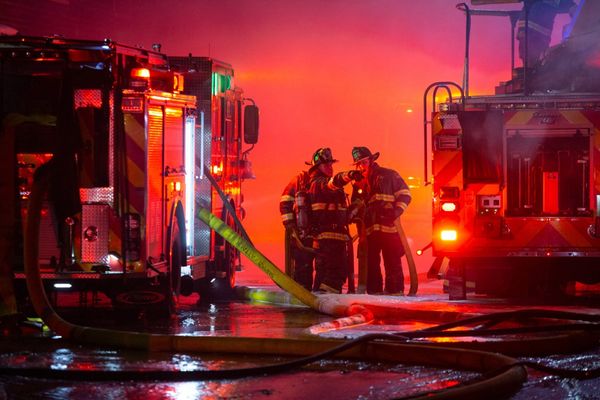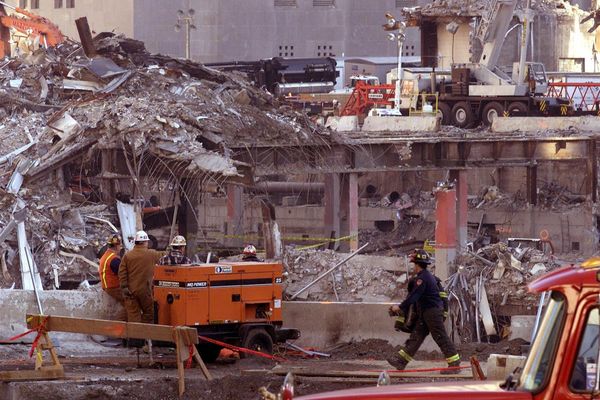
Hours after Russia’s invasion started, Serhiy Kit was receiving phone calls from members of the Ukrainian Association for the Blind at his factory’s office in Dnipro.
Like everyone else in the country, Ukraine’s visually impaired were terrified when the invasion began. In their case, they had an 88-year-old association for visually impaired Ukrainians to fall back on.
Kit is the director of a Dnipro factory that welds parts for railway tracks and was established in 1945 by the association, one of the country’s oldest-running organisations. The factory is a non-profit, predominantly managed and staffed by visually impaired people.
Kit’s factory is one of 48 owned by the organisation in Ukrainian-controlled areas; a further 32 enterprises are in Russian-occupied Ukraine.

“We were the first shelter to open in Ukraine, on 25 February” said Kit. “Twenty-six of our [association] members in Kharkiv rang me and asked me to help them leave. We said they could stay in the factory.”
Kharkiv, 18 miles (30km) from the Russian border, was bombarded by Russian forces from the first day of the invasion, whereas Dnipro, in south-central Ukraine, was relatively calm. The Kharkiv members drove with their families to Dnipro.
“We rang around and found mattresses for them and cleared out one of our offices,” said Kit. “But then the calls kept coming. We’d never done anything like this before, but we couldn’t just stop.”
The factory shelters about 90 people who have fled shelling. Many more have passed through on their way to relatives elsewhere in Ukraine. Their former offices and the basement are crammed with beds and bags of people’s belongings stacked nearby.

Though Kit initially sought to accommodate visually impaired people, they have given beds to neighbours and relatives of the association’s members, people with other disabilities, and displaced people who arrived in Dnipro with nowhere else to go.
Anatoliy Savelevych, a 71-year-old blind man from Sloviansk, an eastern Ukrainian city near the frontline, said he left because he could not stand the sound of artillery. He was evacuated by volunteers but left his wife behind after she refused to leave.
“I am still young enough to get remarried,” said Savelevych, with a laugh. “I didn’t see why we should be tormented any more but she wanted to stay.”
He arrived at the factory in pain, the enduring consequences of a heart attack he experienced last month. He said he had not eaten in 24 hours. The other, non-visually impaired residents in his dorm give him tea and biscuits.

The director’s son Andriy Kit, who is a manager at the factory as well as a standup comedian, went out to buy Savelevych some medicine. He refused to take Savelevych’s money.
Other visually impaired people have come with their relatives as well as with children.
“For blind people, the thing they worry most about is their children because they cannot see the danger,” said Andriy.
Andriy, who is not visually impaired, grew up with a blind father and a visually impaired mother in communal housing for visually impaired people – the norm during the Soviet era.
“The Soviets ghettoised visually impaired people and kept them apart from the rest of society,” said Andriy. “There was even a city outside Moscow called Blind City.”
The factory paused production when the war started but its workers, said Andriy, used to make their way to work themselves on the bus.
“They know the route, they sometimes come in groups but mostly by themselves,” said Andriy. “Our idea is to integrate visually impaired people with the rest of society so that people learn how to behave towards them and not to be afraid of them.”
Money has become tight for Andiry and his father as the factory’s reserve funds have dried up. They receive some donations from sponsors and have most food provided by local restaurants.
The city still charges them business rates, despite their registered status as a refugee centre, and the factory not functioning. In Ukraine, where an average state worker’s salary is £300 a month, the costs of maintaining so many people are immense.

“I do it because if I had to leave my home and go to another city, I hope there would be another Andriy, who is like me, that would help me,” said Andriy.
Serhiy Kit said their motto has always been to be as independent as possible and that they did not accept donations before the war. But now they are desperately looking for partners to restart the factory.
“We want to be independent and to do that we need to earn money,” said Kit. “We are looking for partnerships.”
Most of the factory’s raw material came from the now-destroyed city of Mariupol, south of Dnipro. The breakdown of logistics routes has made it extremely difficult to import goods into Ukraine, and suppliers are scared to send goods, said Kit. Even before the war, he added, they were struggling with finances as their handmade products struggled to compete with mass manufacturing.
“Our handmade parts last four years compared with the mass-made equivalents which last around six months,” said Kit. “This is the work of our team, not me or some individuals and we will not stop accommodating displaced people.”







